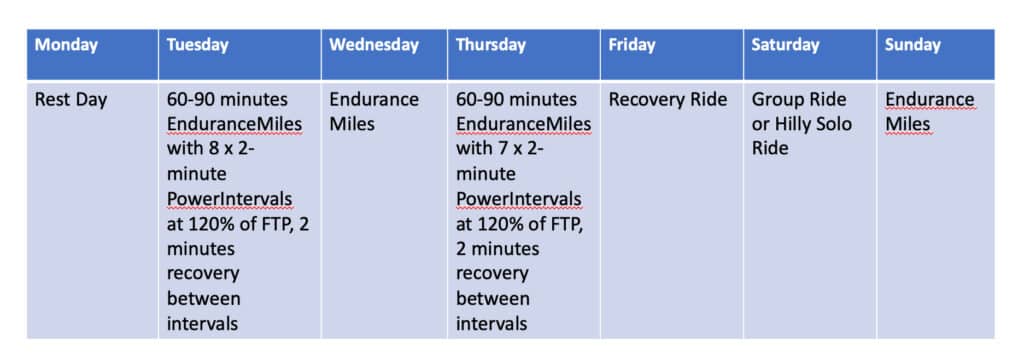By Chris Carmichael, Founder and Head Coach of CTS
There is an entire generation of cyclists that views VO2 max as a genetically pre-determined performance ceiling. A more modern and nuanced take shows it to be quite responsive to training. With different types of workouts we can increase VO2 max itself, as well as peak power, fractional utilization, and power duration at VO2 max. That’s a lot of terms to throw around, but we’ll explain them as we go, tell you why they matter for performance, and how to improve them and get faster on the bike.
What is VO2 max?
VO2 max is the maximum volume of oxygen your body can take in and utilize per minute, so it is considered your maximum aerobic capacity. We express it two ways: absolute or relative. Relative takes a person’s weight into account and is expressed as Liters/kilogram/minute. Absolute is just Liters/minute. Several factors determine an athlete’s VO2 max:
- Vital Capacity: the maximum amount of air your lungs can move in a single breath. This is where the idea that large lung volume is advantageous for endurance athletes. It is, but the mechanics of breathing affect vital capacity, so it is a percentage of total lung volume.
- Cardiac Output: the volume of blood your heart can move in a minute. It is the product of stroke volume (volume of blood expelled with each heartbeat) and heart rate. The more oxygenated blood your heart can circulate, the better.
- Oxygen-Carrying Capacity: Oxygen binds to hemoglobin found in red blood cells. The more hemoglobin you have and the higher your red blood cell count, the higher your oxygen-carrying capacity.
- Oxygen Uptake: VO2 max is not just how much oxygen you can get into the bloodstream. It’s affected by how much of that oxygen your muscles can uptake and use. This is affected by capillarization, mitochondrial density, and the composition of muscle fiber types.
- Body Weight: Losing weight increases relative VO2 max but not absolute.
Trainability
VO2 max is trainable because some of the factors above can be improved through exercise, some more than others. Endurance training improves muscle capillarization and mitochondrial density, and can shift the composition of muscle fiber type. Training and nutrition result in greater hemoglobin and red blood cell production. As the heart muscle adapts to training, stroke volume increases, which increases cardiac output.




Comments are closed.